Over 50 and Can’t Lose Weight? What to Know About Sarcopenia + How to Fix It With Protein
It worked for Gail Lind: “Now I’m 71 years old, I can flip a tractor tire …and I lost 10 inches off my waist”

Losing weight as we get older can be complicated. Of course, we want a faster metabolism, a smaller midsection and a whole lot more stamina. However, the muscle loss, or sarcopenia, we experience as we age can foil our plans. So if it feels like shedding pounds is impossible, “then give your muscles some TLC,” urges University of Maryland’s Pamela Peeke, MD, author of Body for Life for Women. “Research shows that most of us lose half our muscle between age 30 and 80. Take small steps to reverse this, and you’ll be amazed by how great you look and feel.”
Indeed, the results are astounding. Alabama grandmother Gail Lind started learning toning moves and getting tips on foods that boost muscle. “Now I’m 71 years old, I can flip a tractor tire, no osteoporosis, energy for days and I lost 10 inches off my waist,” she cheers. The best part: “Nothing I did felt hard!” Here, discover the toning moves, protein and sarcopenia tips you’ll want to know.
What is sarcopenia?
Experts say muscle loss — scientific term: sarcopenia — impacts nearly every woman over 50. And it’s not just about strength. Muscle constantly burns blood sugar, so losing it sets us up for weight gain, diabetes and inflammation caused by higher blood sugar. Less muscle supporting bones, joints and organs also strains the entire body, raising the risk of osteoporosis, arthritis, heart disease and more. Dr. Peeke asserts, “The more muscle you lose, the lower your odds of remaining healthy long-term.”
Why does muscle loss happen? “As we age, we make fewer hormones to promote muscle growth,” Dr. Peeke explains. “And since the body is programmed to tear down and rebuild cells that may be damaged, when muscle becomes inflamed — due to injury or because your whole body is inflamed — tissue is torn down but may not be rebuilt.”
Strengthening exercises prevent sarcopenia
To curb muscle loss, one of the best things you can do is, well, build more muscle. But that doesn’t mean hours on end in a gym throwing kettlebells and doing deadlifts. In fact, in one study, eight weeks of toning moves helped 90-year-olds increase strength by 174% and walking speed by 48%. Meanwhile, Wake Forest University research on dieters over 60 found those who added resistance training ended up strongest and slimmest. “Just a few short bouts of strength training a week will make a huge difference,” promises Dr. Peeke, a fan of free videos at AARP and Fitness Blender. You can also try some of Gail’s favorite moves – keep reading to learn how.
How protein and sarcopenia are linked
Easy diet tweaks can also restore muscle even if you don’t exercise. “Hormonal changes reduce our ability to turn protein we eat into new muscle,” notes Dr. Peeke. “But we can compensate by eating extra protein.” (Boost your intake with protein bread for weight loss.)
In fact, when scientists at Duke University had volunteers over the age of 60 use either a traditional diet or a protein-rich one (with 30 grams of protein per meal and 15 grams per snack), the protein group significantly increased muscle strength and overall health while doubling their weight loss. In addition, they experienced a big spike in the flat-belly hormone adiponectin, helping waists and tummies cinch in as muscles got firm. (Consider eating more protein in the morning to increase weight loss.)
Protein and sarcopenia success story: Lynne Jordan, 57
Chicago singer Lynne Jordan, 57, agrees. Prior to making healthy changes, she couldn’t make the bed without collapsing. Then she read Choosing the Strong Path about age-related muscle loss. “I began using tiny pink dumbbells and switched to a protein-rich diet. In two weeks, I was already stronger!” At this time, Lynne is unstoppable — and a whole lot slimmer. “I shed 100 pounds without dieting. Older women often feel it’s too late. I’m here to say, No, it’s not!”
Protein and sarcopenia before and after: Gail Lind, 71
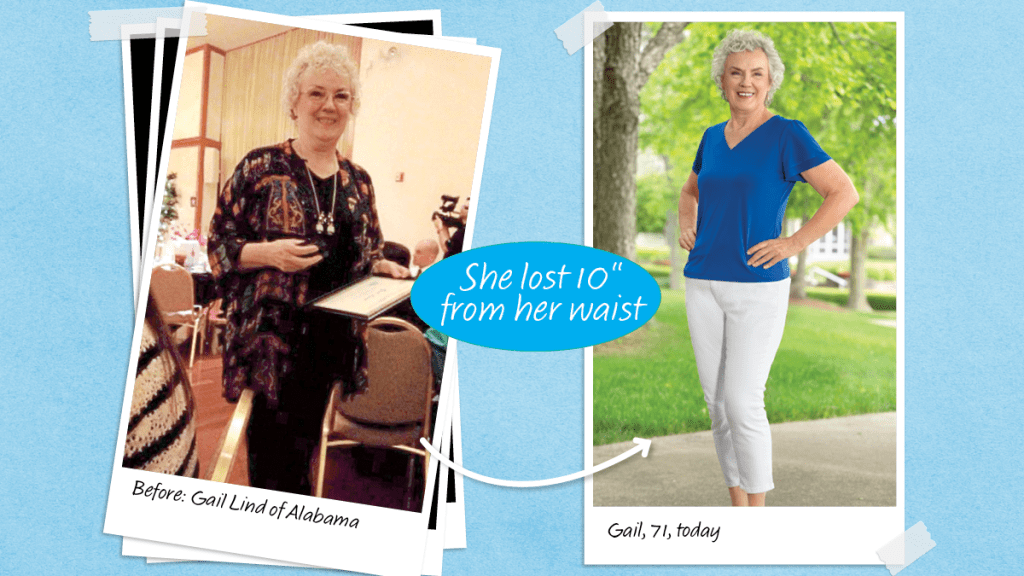
Following menopause, Gail Lind was sluggish and nearly diabetic. “In my mid-60s, I was in the early stages of osteoporosis and so weak that it was hard to get on the floor to play with my grandson,” she recalls. As a result, she signed up for a strength-training class on a whim. “As I built muscle, I felt a huge boost of energy and started to get a waistline,” she recalls. Thrilled, she hired a trainer, who advised eating 100 grams of protein daily plus lots of fruit and veggies. Her 40″ waist soon shrunk to a trim 30″ and she’s down 50 pounds! “My health is perfect, my energy is crazy and I fully stopped osteoporosis. If you want anti-aging, forget the cosmetic counter,” says Gail, 71, now a certified trainer at AnyTime Fitness Hampton Cove in Huntsville, Alabama. “Muscle is where the magic happens!”
Gail’s favorite muscle-building moves
“You might think you can’t do strength training but give it a try. I bet your body will amaze you,” says Gail Lind, who’s been a certified trainer for three years. “You don’t even need hand weights or gym machines. Start just using the resistance of your own body, then consider other options as your strength increases.” Note: While these are all exercises Gail uses frequently with beginners, be sure to talk to your doctor or a qualified professional before undertaking any new workout regimen.
Belly blaster: Forearm planks
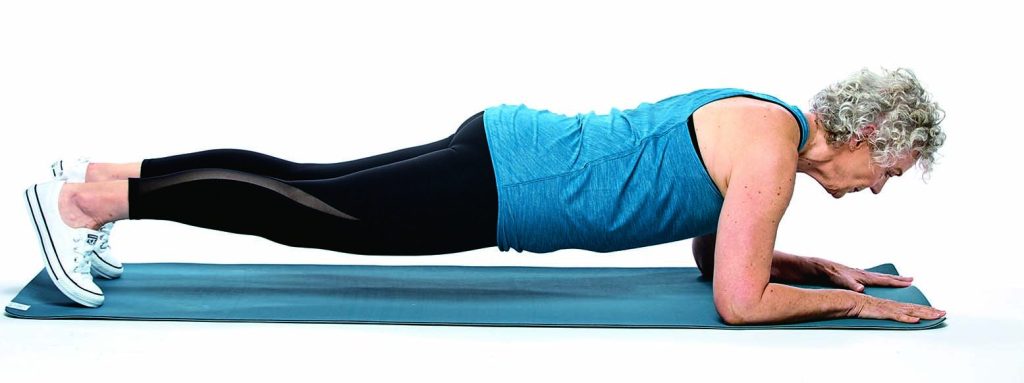
This move targets not only muscles in your belly and waist, it also helps firm your arms, legs and tush!
To do: Start on your knees and forearms, elbows directly under your shoulders. Then extend your legs straight back to come into a plank, forming a straight line from head to heels. Tighten all muscles and hold for 10 deep breaths; lower your knees and rest 10 seconds. Repeat 10 times.
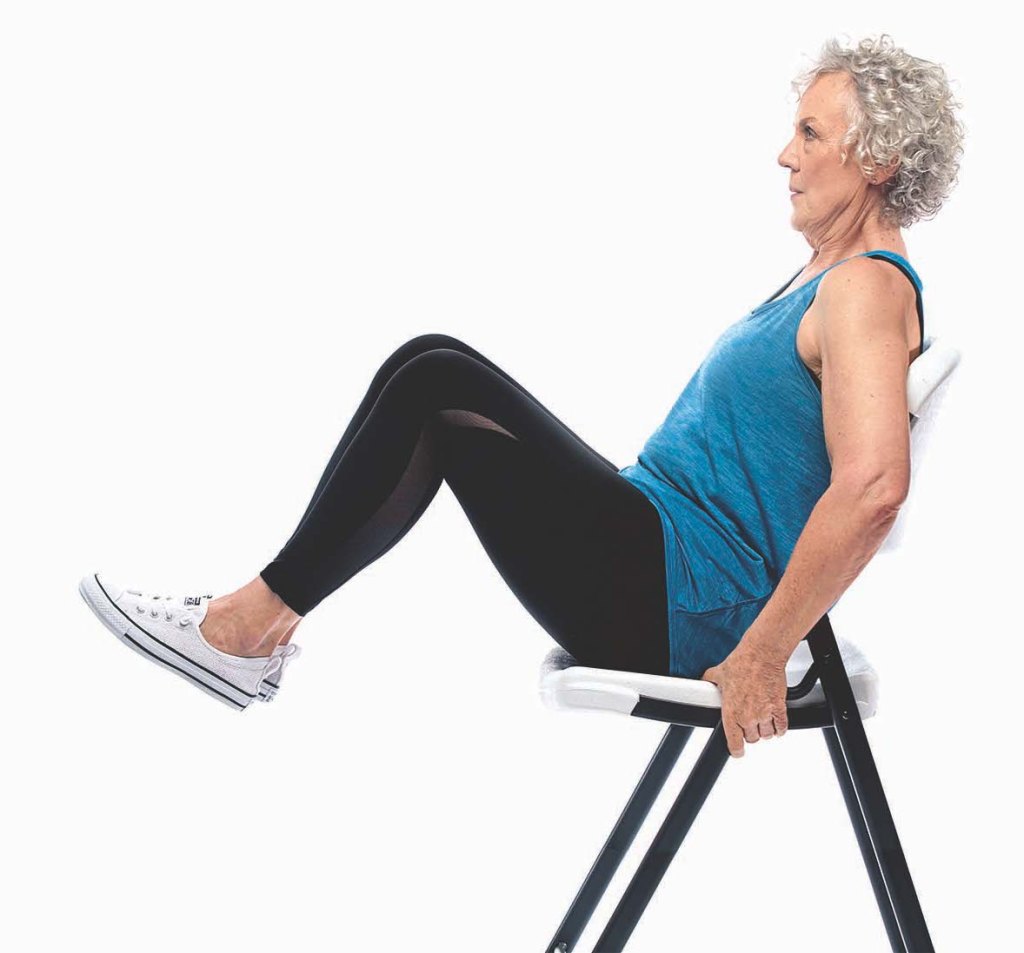
Ab shrinker: Knee tucks
An alternative to sit-ups, knee tucks firm your -middle yet put less strain on your neck and back.
To do: Sit on a chair, grasping the seat. Stretch your legs out in front of you. Then, with your back straight, exhale and pull your knees as close to your chest as you can; inhale and extend your legs without touching the floor. Do two sets of 10 reps.
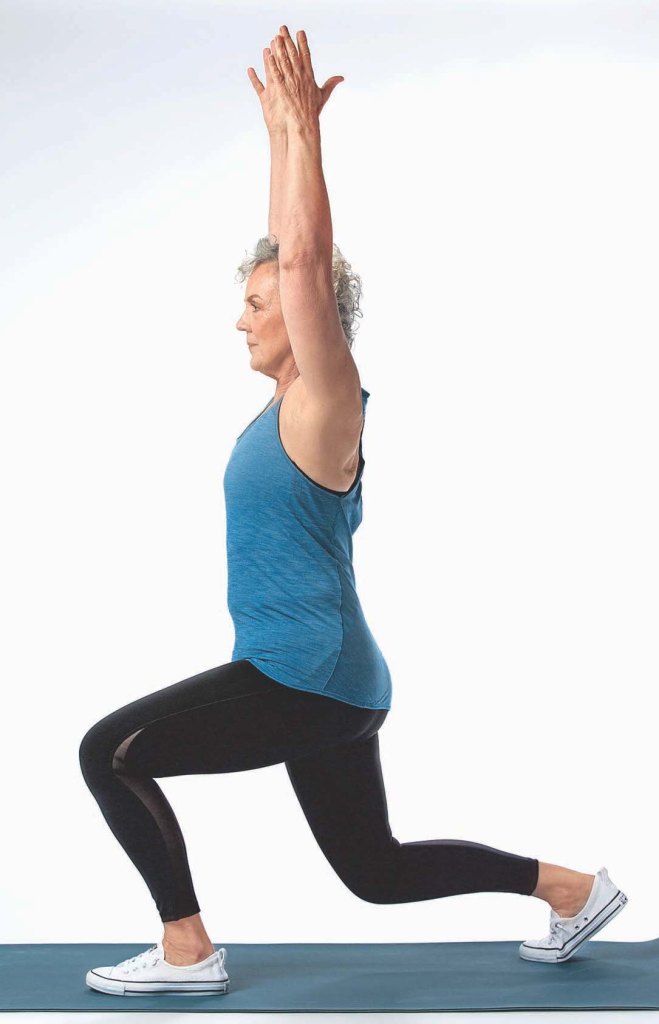
Allover tone: Back lunges
Easier on the knees than forward lunges, reverse lunges improve balance and build lean muscle from head to toe.
To do: With your arms extended overhead and feet hip-width apart, exhale and take a large step back so your front thigh is parallel to the floor (knee over ankle) and your back knee is pointing toward the floor.
Inhale and stand. Do 10 times; rest. Repeat 10 times on your opposite leg.
Middle whittler: Bridges
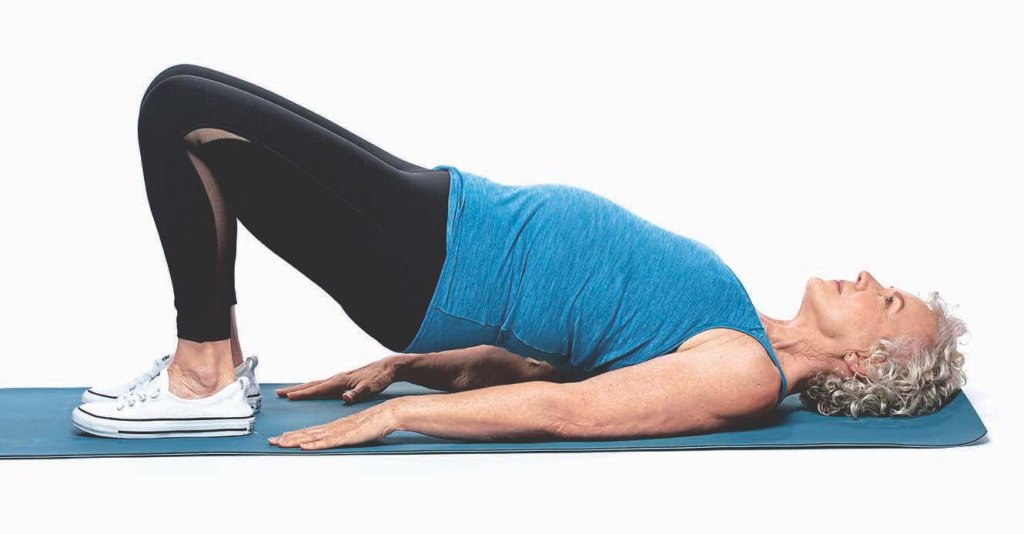
Bridges tone all your ab muscles, plus they strengthen legs, buttocks and muscles that help alleviate lower-back pain!
To do: Lie on the floor, with your hands at your sides, knees bent and in line with feet. Then, squeeze your tush off the ground as high as you can. You want to be up on your shoulders as much as possible and make sure your back is flat. Do two sets of 10 reps.
Protein-rich meals to ward off sarcopenia
To follow Gail’s lead, aim for 30 grams of protein at each meal, plus a snack with 10–20 grams of protein. Add lots of fruit and veggies, moderate amounts of good fat and a couple daily servings of fiber-rich starch like brown rice or quinoa. Incorporating omega-3–rich foods like fish, walnuts or flaxseed has also been shown to spike muscle growth. As always, get a doctor’s okay to try any new plan. (Protein pasta can also help boost your intake – and increase weight loss.)
Breakfast
Two eggs, any style, prepared with your favorite veggies, a small serving of cheese (optional) and a little olive oil.
Lunch
Add 5 oz. tuna, 1⁄2 cup quinoa or brown rice, chopped veggies and avocado over a large bowl of greens with a drizzle of vinaigrette.
Snack
Top 1 small bowl of Greek yogurt with 1⁄2 cup of fruit or any variety protein bar with at least 10 grams of protein.
Dinner
Enjoy 6 oz. of grilled chicken, 1 cup of green beans, 1 small ear of corn with 1 tsp. of olive oil and a side salad drizzled with vinaigrette.
This content is not a substitute for professional medical advice or diagnosis. Always consult your physician before pursuing any treatment plan.
For more on protein and strength training, check out these stories:
Doctor + Physical Therapist: These Are the Best Foods and Exercise To Prevent Osteoporosis
“I Lost 130 lbs at Age 53!” — Here’s the Protein Combo That Builds Muscle + Boosts Weight Loss
Weight Loss Success: “I Lost Faster At Age 71 Than Ever Before With This Protein Trick”















